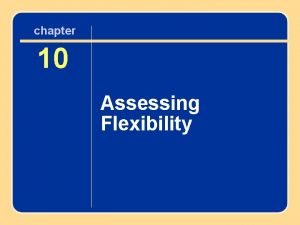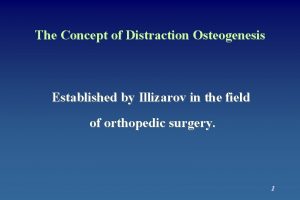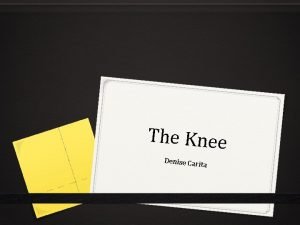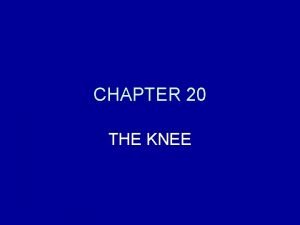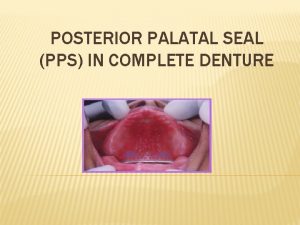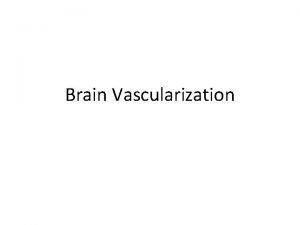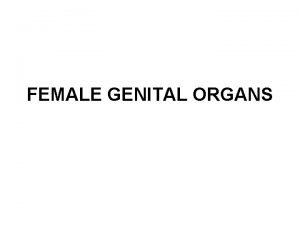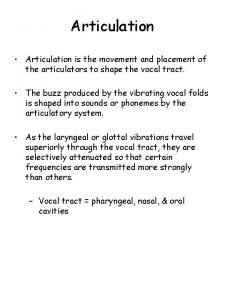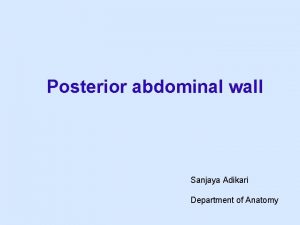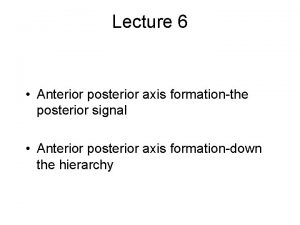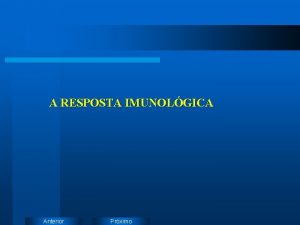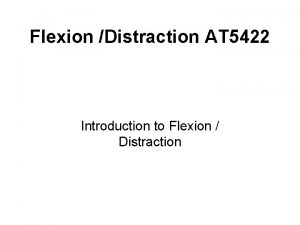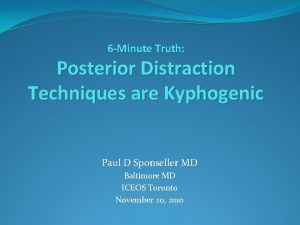Effect of posterior distraction forces on anterior intradiscal















- Slides: 15

Effect of posterior distraction forces on anterior intradiscal pressure in dual Growing Rod technique 1, 2 Andrew Mahar, MS 2, 3 Behrooz A. Akbarnia, MD 3 Michael Flippin, MD 1 Tucker Tomlinson, BS 3 Pat Kostial, RN, BSN 2, 3 Ramin Bagheri, MD 1 Orthopedic Biomechanics Research Center Rady Children’s Hospital 2 Department of Orthopaedic Surgery University of California 3 San Diego Center for Spinal Disorders, San Diego 4 th International congress on Early Onset Scoliosis and Growing Spine (ICEOS) November 19 -20, 2010, Toronto, Canada

Disclosures Author: Andrew Mahar, MS (e) Alphatec Spine Inc. Co-Authors: Behrooz A Akbarnia, MD (a, b) De. Puy Spine, (a, b, c) Nuvasive, (a, b) K 2 M, (a, b, c) Ellipse Technologies, (a) K Spine Michael Flippin, MD Tucker Tomlinson, BS Pat Kostial, RN, BSN No relationships Ramin Bagheri, MD (d) De. Puy Spine, (e) Embassy, (a) Lanx, (e) N-Spine, (a, b, c, d, e) Nuvasive a. b. c. d. e. Grants/Research Support Consultant Stock/Shareholder Speakers’ Bureau Other Financial Support

Background It is theoretically possible that distraction maneuvers used in GR surgery: • Produce a focal kyphogenic force • Affects only one vertebral segment rather than multiple ones. • Influences the growth of the spine ?

Purpose- Research questions • Are the posteriorly applied distractive forces transmitted anteriorly in a distractive or compressive mode? • How will they affect the anterior intradiscal pressure during growing rod surgery? ?

Materials and methods • Six immature porcine spines were harvested with soft tissues and rib heads attached • Upper foundation (T 3 -T 4) was instrumented with 4. 75 mm screws in 3 and with laminar hooks in the other 3 • Lower foundation (L 3 -L 4) was instrumented with 4. 75 mm screws in all 6

Materials and methods • A distractor was instrumented with strain gauges and calibrated to calculate distraction forces • One pressure sensor was inserted into the intradiscal space just inferior to the upper foundation (T 3 -T 4) and one was inserted into the space midway between the upper and lower foundations

Results • Distraction with screw-anchor upper foundation (416 ± 101 N) produced significantly higher distractive forces compared to hook-anchor model (349 ± 100 N).

Results There were no significant differences in disc pressure between levels or between different upper foundation constructs ADJACENT PRESSURE MIDDLE PRESSURE Hooks Screws Mean 0. 183 0. 194 0. 161 0. 173 SD 0. 098 0. 062 0. 065 0. 083

Results • Intradiscal pressure adjacent to upper foundation consistently had greater reduction than the level equidistant within the construct

Results Distraction performed with pedicle screw construct consistently demonstrated greater reduction in disc pressure compared to laminar construct.

Discussion • More posterior location and more freedom of movement during distraction might be one explanation for the lower pressures recorded in hook vs pedicle constructs • Applying a stronger distractive force via screw-anchor constructs resulted in more distraction (end plate separation) throughout the spine

Limitations • This animal model does not replicate the in vivo sagittal profile of the EOS patient population • No coronal plane deformity existed in this model • Connective tissue of the animal may be different compared to human • Adult spine, if attainable at all, would be different from children in terms of dimension and degenerative changes due to aging

Conclusion • In the dual growing rod technique: • posterior distraction forces are transmitted as distractive forces to anterior column as evidenced by reduction in intra-discal pressure at two spinal levels. • posterior distraction forces are distributed at multiple levels rather than delivered to the disc immediately adjacent to the foundation

Conclusion • The distribution of loads at multiple levels may assist with curve control and may also affect the vertebral growth as well as maintaining sagittal alignment

Thank You
 Sit and reach
Sit and reach What is driver inattention
What is driver inattention Distraction devices
Distraction devices Chapter 8 managing distractions
Chapter 8 managing distractions Distracted noun
Distracted noun Apley's compression vs distraction
Apley's compression vs distraction Genu recurvatum
Genu recurvatum Formal prayer
Formal prayer Lumbocostal triangle
Lumbocostal triangle Vibrating line posterior palatal seal
Vibrating line posterior palatal seal Post inf cerebellar artery
Post inf cerebellar artery Ovarium dexter
Ovarium dexter Posterior palatal seal area
Posterior palatal seal area Anterior posterior pillars
Anterior posterior pillars Anterior posterior lateral
Anterior posterior lateral Anterior vs posterior abdominal wall
Anterior vs posterior abdominal wall
